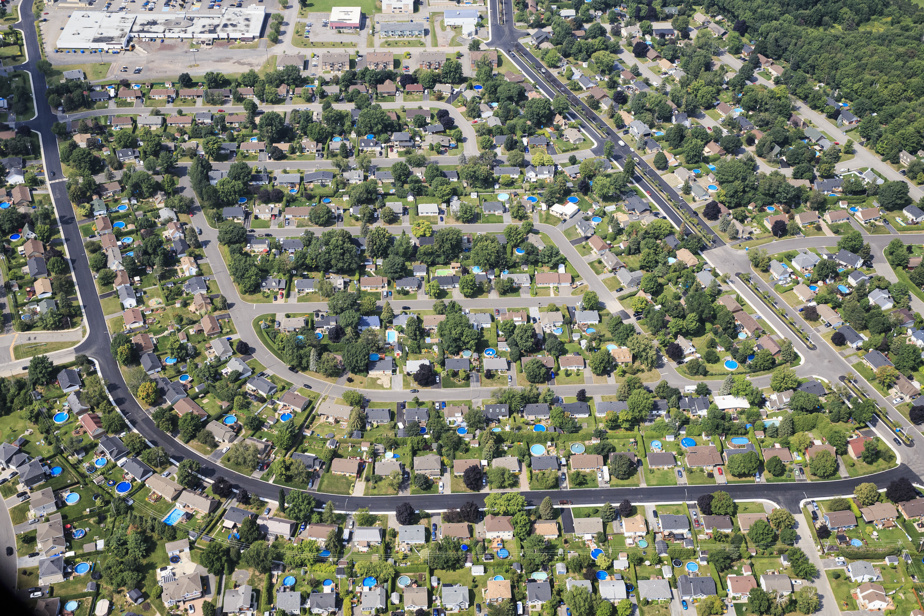Public transport

PHOTO MARTIN CHAMBERLAND, ARCHIVES LA PRESSE
View of the facilities of the Metropolitan Express Network, in Brossard
“The objective of concentrating 40% of household growth in TOD (public transport hub) areas has been achieved. [En tout] 43% of new housing has been built there,” says the assessment of the Metropolitan Planning and Development Plan (PMAD). The result is lower in the crowns, where there are 35 TOD areas, compared to 106 on the Island of Montreal. The CMM proposes to increase the density allowed in public transit corridors such as Taschereau Boulevard, on the South Shore.
Go shopping on foot

PHOTO FRANÇOIS ROY, LA PRESSE ARCHIVES
View of Centropolis, in the heart of Laval
In Laval and in the southern crown of the CMM, only 1% of households have walking access to services and businesses in TODs. “This situation highlights the importance that must be given, in the coming years, to increasing functional diversity in densification projects,” concludes the CMM. The organization is wondering about the possibility of integrating pedestrian accessibility targets into the PMAD in TOD areas.
Young households

PHOTO ALAIN ROBERGE, LA PRESSE ARCHIVES
Neighbors chat in a new area under construction in Saint-Lin–Laurentides.
As household growth will come to 65% of the 75+ household group, “there will be no increase in the number of households with children in the CMM [657 000 en 2021] in the next 20 years. The 523,000 existing houses will make it possible to meet the needs of young households,” maintains Philippe Rivet, head of the Greater Montreal Observatory. Few in number, the new houses nevertheless occupy “nearly half (46%) of the space used for residential development”.
Access on foot to transport

PHOTO ALAIN ROBERGE, LA PRESSE ARCHIVES
Commuter train users moments from boarding at Lachine station
People are encouraged to use public transit. The service still has to exist. Only one in three households in the Montreal region lives in an area with high pedestrian accessibility to public transit. However, accessibility to public transit has a significant impact on the modal share of public transit, underlines the document. Outside TOD, no salvation? This seems to be the case since considering only the TOD areas, this proportion rises to 69%.
Reduction of agricultural area

PHOTO ALAIN ROBERGE, LA PRESSE ARCHIVES
Aerial view of a newly built sector in Saint-Jean-sur-Richelieu
The provincial government is encroaching on the agricultural zone. Since the establishment of the PMAD, no encroachment into agricultural zones has been granted, except for four Quebec government projects: the REM terminus in Brossard, the Vaudreuil-Dorion hospital, the Google data center in Beauharnois and a secondary school in Mirabel, for nearly 127 hectares. The danger is elsewhere: agricultural land left fallow (about 6000 hectares), especially those less than 1 km from the built perimeter. These total approximately 3950 hectares.
Go to work by bike

PHOTO BERNARD BRAULT, PRESS ARCHIVES
Aerial view of a footbridge spanning Route 132, in the Vieux-Longueuil sector
The use of the bicycle as a means of transport to get to work is stagnating at around 2%. The figure dates from the 2021 census. Has it been influenced by the popularity of telework? Philippe Rivet, head of the Greater Montreal Observatory, wonders. Despite disappointing overall results, the modal share of cycling to work reached 8.9% in the borough of Rosemont–La Petite-Patrie, and 12.6% in the borough of Plateau-Mont-Royal.
